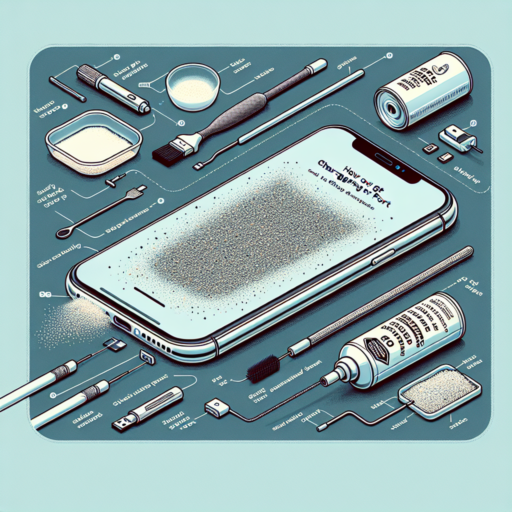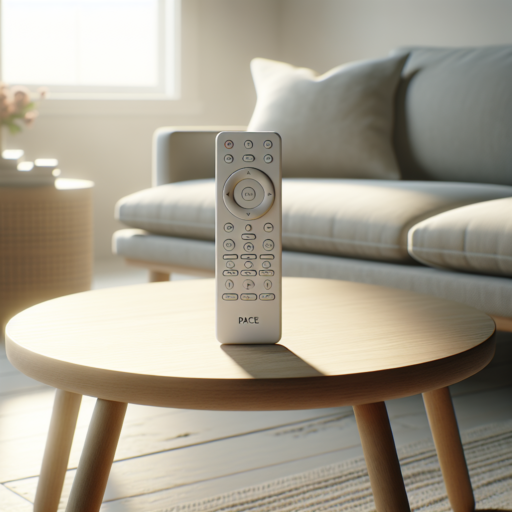Introduction to Removing Sand from Your Charging Port
Discovering sand in the charging port of your electronic devices can be a surprisingly common issue, especially after a day at the beach or in a sandy environment. Sand particles, due to their fine and abrasive nature, can potentially cause significant damage if not removed properly. This introduction seeks to provide you with fundamental insights into the effective removal of sand from your charging port, ensuring the longevity and optimal functionality of your device.
First and foremost, it’s important to understand the potential risks associated with sand in your charging port. Not only can it hinder the connection between your charger and the device, but it can also lead to more severe problems like short-circuiting and, in the worst-case scenario, complete device failure. Therefore, taking the appropriate steps to remove sand gently and effectively is crucial.
Recognizing the need for a delicate approach is your first step towards resolving this issue. Using the right tools and techniques can make a significant difference in preventing any unintentional damage. In the following sections, we will delve into the specifics of these methods, emphasizing the importance of a cautious yet thorough cleaning process.
Step-by-Step Guide to Safely Get Sand Out of Charging Port
Getting sand out of the charging port of your device can be a delicate process, but it’s crucial for maintaining the functionality and longevity of your gadget. Sand particles can obstruct the charging process, potentially harm the internal connections, and ultimately compromise your device’s integrity. This guide will provide a safe and effective method to remove sand from your device’s charging port.
Turn Off Your Device
First and foremost, power off your device to prevent any potential short circuits. This precautionary step is essential for protecting your device’s internal components while you remove the sand. Ensuring your device is off before attempting any cleaning can make a significant difference in the safety and success of the process.
Gently Shake the Device
Hold your device with the charging port facing downwards and gently tap or shake it to dislodge any loose sand particles. Avoid vigorous shaking as it might push the sand deeper or damage the internal components. A soft, gentle tap on your hand or a soft surface can help remove some particles. This step can be surprisingly effective as a starting point in removing sand from the charging port.
Use Compressed Air
After removing loose sand, using compressed air can help clear out the finer particles stuck in the charging port. Hold the can of compressed air upright and use short bursts to avoid moisture accumulation inside the port. Do not insert the air can’s nozzle directly into the port; instead, aim it slightly away from the port opening to prevent damage.
Tools You’ll Need to Remove Sand From Your Phone’s Charging Port
Removing sand from your phone’s charging port is a delicate task that requires precise tools to avoid any damage. The ingress of sand particles can hinder your phone’s charging capabilities and overall functionality. Before you start the cleaning process, ensure you have the right tools on hand to safely and effectively remove any debris.
Compressed Air
A can of compressed air is your first line of defense in dislodging sand from the charging port. A gentle blast can push out sand without physical contact, reducing the risk of scratching or further embedding the particles into your device. Ensure you use short, controlled bursts to avoid damage from excessive force.
Soft-Bristled Brush
A soft-bristled brush, such as a clean paintbrush or a toothbrush, can be used to delicately remove sand particles. The soft bristles are gentle on your device and can reach into the charging port’s nooks and crannies. It’s important to use a brush with synthetic bristles to avoid static electricity that could potentially harm your phone’s sensitive internals.
Plastic Tweezers or Toothpick
For stubborn sand particles that compressed air or a brush cannot dislodge, a pair of plastic tweezers or a toothpick may be necessary. These tools can help you carefully pick or scrape away sand. It’s crucial to use plastic tools over metal ones to avoid electrical conduction and scratching inside the charging port. When using a toothpick, ensure it’s finely pointed and handle with utmost care to prevent breaking off inside the port.
Why Is Sand in Your Charging Port a Problem?
Having sand in your charging port can seem like a minor inconvenience at first glance, but it poses several potential problems that can affect the overall functionality of your device. Sand particles, by their very nature, are abrasive. When they find their way into the delicate interior of a charging port, they can cause physical damage. This damage could range from minor scratches to more serious issues that could impair the device’s ability to charge properly.
Connection Issues are one of the primary complications arising from sand being trapped in your charging port. These tiny grains can obstruct the connection between your device’s charger and the port itself, leading to inconsistent charging or, in worse cases, preventing your device from charging at all. The presence of sand can disrupt the intricate connections needed to complete the charging circuit, leading to frustration and potentially leaving you with a drained battery at the most inconvenient times.
In addition to causing physical harm and connection issues, sand in the charging port can lead to Long-Term Damage. Over time, the abrasive nature of sand can wear down the contact points within the port. This degradation can result in a loose connection or complete failure to charge. Moreover, the effort to remove sand from the port, if not done carefully, can further exacerbate the issue, potentially introducing more debris or causing accidental damage during cleaning.
Preventing Future Sand Intrusion in Your Charging Port
Keeping sand out of your charging port can extend the life of your electronic devices and save you from costly repairs or replacements. Sand particles, though seemingly innocuous, can cause severe damage to the delicate components inside the charging port. This problem is particularly prevalent for individuals who frequently use their devices near beaches or in desert areas. However, with a few preventive measures, it’s possible to safeguard your devices against sand intrusion.
Making Use of Protective Covers: One of the most effective strategies to prevent sand from getting into your charging port is to invest in high-quality protective covers. These covers are specifically designed to seal off ports when they’re not in use, providing a strong barrier against external particles. Moreover, many protective covers come equipped with flaps that cover the charging port, offering an added layer of protection without sacrificing accessibility.
Avoiding Direct Exposure to Sand: While protective covers can significantly reduce the risk of sand intrusion, avoiding direct exposure to sand is equally important. When using your device in sandy environments, try to keep it inside a bag or a pouch when not in use. Placing it on a clean cloth or surface can also minimize the chances of sand getting into the charging cut. Additionally, always ensure your hands are free of sand before handling your device or attempting to charge it.
Common Mistakes to Avoid When Cleaning Your Charging Port
Cleaning your charging port is a delicate task that is often underestimated. While it’s crucial to keep it clean for optimal device performance, certain missteps can end up causing more harm than good. Here, we discuss some common mistakes to avoid ensuring your charging port remains in top condition, safeguarding your device’s longevity.
Using Inappropriate Tools
One major mistake is using inappropriate tools for the job. Items like metal pins, needles, or sharp objects can scratch the internal components or even push debris further inside, exacerbating the problem. Opt for soft, non-conductive tools like a small, clean, anti-static brush or a plastic toothpick to gently remove any buildup.
Applying Excessive Force
Another critical error is applying excessive force. Whether it’s blowing into the port, which can introduce moisture and cause short-circuits, or aggressively scraping, the delicate pins inside the charging port are susceptible to bending and breaking. A gentle approach is crucial to avoid damaging these sensitive components.
Lastly, neglecting regular maintenance is a slip-up that can lead to long-term issues. Light, regular cleaning prevents the buildup of dust and lint, reducing the need for deep cleans that might risk damaging your device. Incorporating a monthly or bi-monthly cleaning into your routine can save time, effort, and potential repair costs in the long run.
Professional Solutions for Stubborn Sand in Charging Ports
When it comes to maintaining the longevity and functionality of our beloved electronic devices, dealing with stubborn sand in charging ports can be a daunting task. Many of us have experienced the frustration of discovering that tiny grains of sand have found their way into our devices’ charging ports, interfering with our ability to charge them efficiently. This situation not only hampers the charging process but can also lead to potential damage to the internal circuitry of the device if not addressed properly.
Identifying the Issue
The first step in tackling the problem of stubborn sand in charging ports is to accurately identify the presence of sand and assess the extent of its intrusion. In many cases, the sand may not be visible to the naked eye, requiring the use of a magnifying glass or a careful inspection under bright light. Once you have confirmed that sand is indeed the culprit, it’s essential to approach the removal process with caution to prevent further damage to your device.
Professional Tools and Techniques
To effectively remove sand from charging ports, professionals often rely on a variety of specialized tools and techniques. Compressed air, for instance, can be used to gently blow away the sand particles without making physical contact with the sensitive components inside the port. Another commonly used tool is a soft-bristled brush, which can delicately sweep away the sand without scratching the interior of the port. In more severe cases, professionals might use a microscopic vacuum designed specifically for electronic devices, offering a safe and thorough cleaning solution.
Understanding the nuances of dealing with sand in charging ports highlights the importance of seeking professional assistance. Attempting to remove stubborn sand without the proper tools or knowledge can lead to irreversible damage, rendering your device unusable. It’s always advisable to turn to experts who are equipped with the necessary skills and tools to restore your device’s functionality safely and efficiently.
FAQs: Tips and Tricks for Keeping Your Charging Port Sand-Free
When it comes to protecting your devices, keeping the charging port free from sand is crucial, especially during those beach outings or desert adventures. Sand can not only hinder the connection between your device and the charger but can also lead to long-term damage. In this concise guide, we’ll address the most common questions and offer practical advice on maintaining a sand-free charging port.
How Can I Prevent Sand From Entering My Charging Port?
Prevention is better than cure, and this holds true for keeping sand out of your charging port. Start by using protective covers that specifically cover the ports when not in use. Additionally, consider investing in a high-quality waterproof bag or case when heading to sand-prone environments. Keeping your device inside a sealed bag when not in use can drastically reduce the risk of sand intrusion.
What Should I Do If Sand Gets Inside the Charging Port?
If sand has already found its way into your charging port, refrain from inserting any cables, as this can push the sand deeper into the device. A can of compressed air can be your best friend in this situation; short, controlled bursts can help dislodge any particles. If compressed air isn’t available, a soft, dry brush can also be a gentle yet effective tool for removing sand.
Are There Any Long-Term Solutions to Keep My Charging Port Safe?
For those looking to minimize the risk of sand damage over time, consider adopting wireless charging technology if your device supports it. This eliminates the need to expose charging ports at all, greatly reducing the likelihood of sand entering and causing harm. Another long-term strategy is to routinely inspect and cleanse your device’s port to prevent buildup and potential issues.









